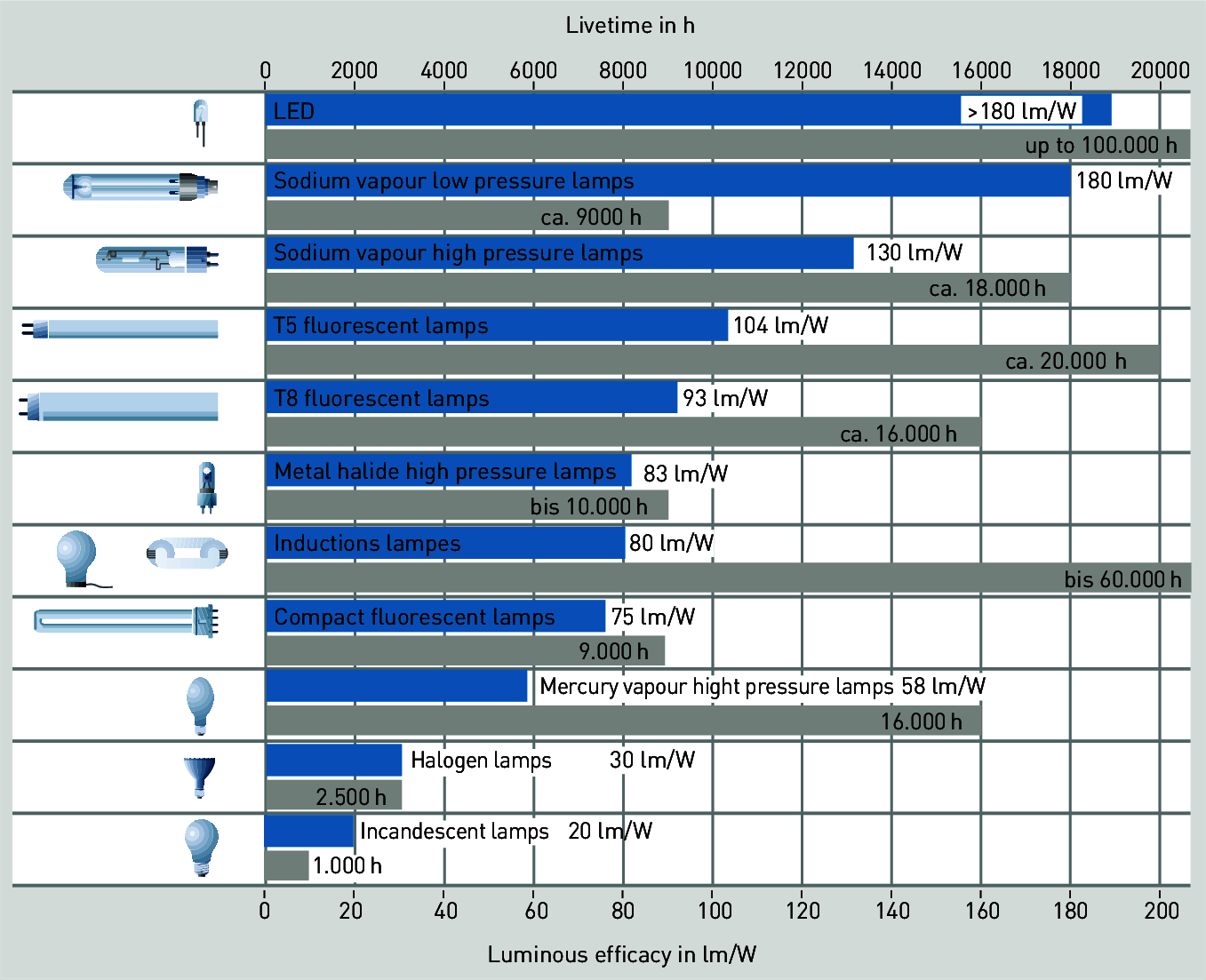Luminous efficacy of lamps
Light sources convert electrical power into visible radiation (light). A large portion of the electrical power consumed by a light source is converted into heat. Incandescent lamps emit only 5% of their electrical power as light; in fluorescent lamps the number ranges between 20% and 40%. Luminous efficacy is a measure for the efficiency of light generation. It is measured in lumens per watt (lm/W).
